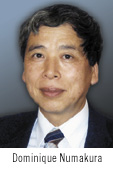
Organic semiconductor materials could take 5 – 10 years to break through all the technical barriers.
There is a lot of prognosticating and discussion surrounding which next generation semiconductor material will replace silicon in the electronics industry. However, if we consider mainstream electronics, there is no question the overwhelming favorite over the next few decades will continue to be silicon.
Recently many industry researchers and college professors have spoken about the possibility of an organic semiconductor as an alternative to silicon. They predict the new material will provide a low cost solution due to the availability of a low temperature process involving ink jet printing. It will provide great opportunities in new applications that include flexible displays and wearable computers.
I am not optimistic about the outcome for organic semiconductor materials and their processes. Currently, the material cost is very high and cannot be offset with small production volumes. The application processes have many limitations in generating actual active devices. The current process capabilities to produce fine traces are three or four orders below that of traditional silicon semiconductors. Another big issue is that the electrical properties are very different from silicon; hence, a lot of trials and evaluations are needed to standardize design rules before they can be used as major materials for the electronics industry. In my opinion, it could take up to five or 10 years to break through all of the technical barriers before volume applications begin.
Meanwhile, several Japanese material suppliers such as Sumitomo Electric and Hitachi Cable are going in a different direction. They are not experimenting with new materials; in fact, they are working with materials that have been in the industry for a quarter of a century. The materials are compound semiconductors that include GaAs and InP. A key value with compound semiconductors is that they have several important properties that cannot be covered by silicon semiconductors. Typical examples include high-speed devices and optical devices such as laser diodes and LED. Twenty years ago the market niche was small compared to silicon base devices; however, during the last decade its popularity has grown.
The market share for compound semiconductors could be less than 1% compared to silicon. Manufacturers do not expect their materials to be a major source in the semiconductor industry in the future; however, growth rates are higher than silicon because demands are increasing faster for this product. Fortunately for manufacturers, competition is limited in this market and higher margins are realized. Currently, the wafer sizes of the compound semiconductors are 2 to 6 inches because of customers’ requirements. Wafer manufacturers do not need to make large capital investments for equipment because customer requirements have not changed.
Sumitomo Electric, a large cable and flex circuit manufacturer in Japan, expects over 23 billion yen in revenue for 2006 from their compound semiconductor business. About half of this revenue is generated by GaAs wafers. These wafers, used in blue ray laser devices, are the growth leader in this segment. The company plans to double its manufacturing capacity in 2007. Hitachi Cable, another major cable and TAB manufacturer, expects over 12 billion yen in revenue this year and more than a 20% growth next year.
There may not be much room for newcomers in this market, although Bridgestone, the tire supplier, recently developed a new compound semiconductor SiC wafer for high frequency and power devices. I do not recommend that the newcomers in the semiconductor material industry go in the same direction as these Japanese companies; but they could learn from previous business histories when they plan to start their new electronic material business.
Headlines
Tokuyama, a material company in Japan, will increase its manufacturing capacity of poly silicon more than 50% to 3,000 tons per year for semiconductor and solar cell applications.
Hitachi Cable developed a 13-micron diameter copper wire as the core conductor of the ultra small coaxial cable (0.16 mm in diameter). Meanwhile, Hitachi Chemical will invest 2.5 billion yen to build a new plant for anisotropic conductive film in Shimodate to cover booming demands from the FPD industry.
Poly Plastic, a resin supplier in Japan, will increase its manufacturing capacity of LCP resin more than 50% to 8,200 tons per year by the first quarter of 2008 to cover growing demands.
NOK, the largest Japanese flex circuit manufacturer, expects a record revenue of 167 billion yen in the fiscal year of 2006. But income will decline to 21 billion yen because of serious market price competition.
MEC, a chemical supplier for the Japanese PCB industry, has recorded a 3.86 billion yen revenue for the first half of the 2006 fiscal year, a 27.1% growth from the same period in 2005.
Japanese PCB manufacturer Ibiden has completed the construction of its second plant in Beijing to manufacture multi-layer boards for cellular phones.
NEC Electronics developed a new stacked memory package technology where nine different chips are mounted in a small package using poly-silicon through-hole technology. PCD&M
Dominique Numakura is president of DKN Research; This email address is being protected from spambots. You need JavaScript enabled to view it..














